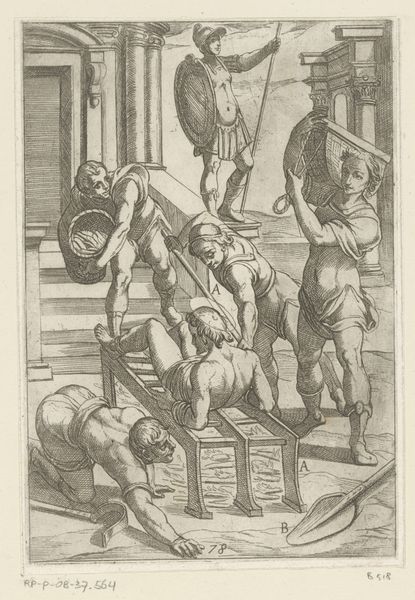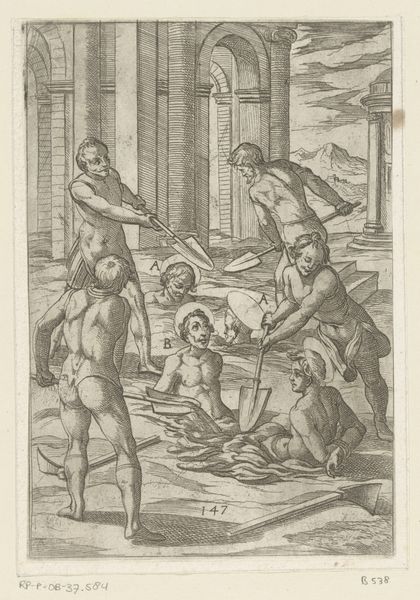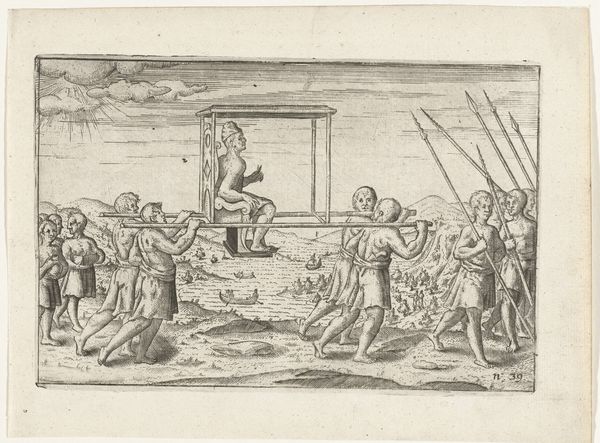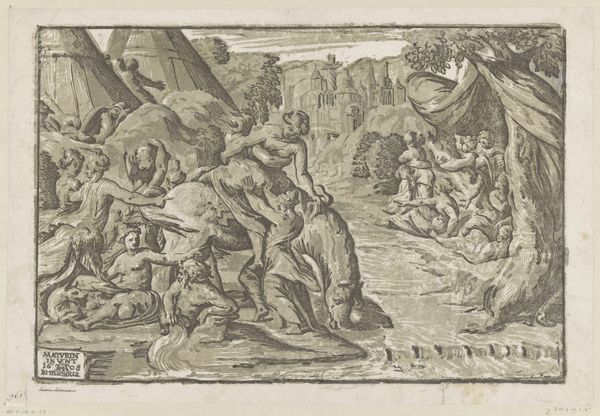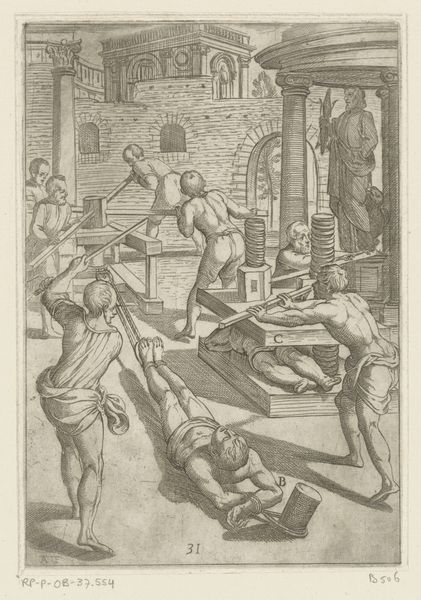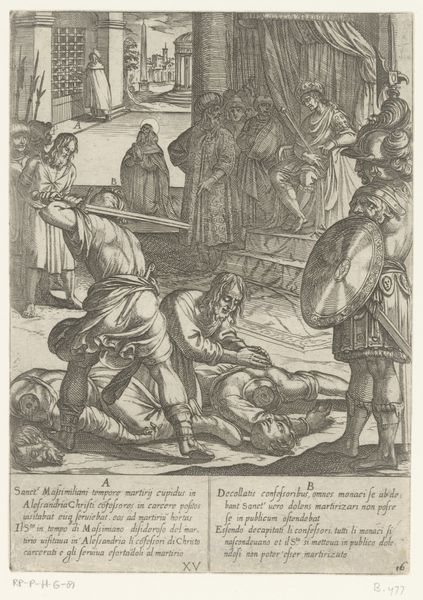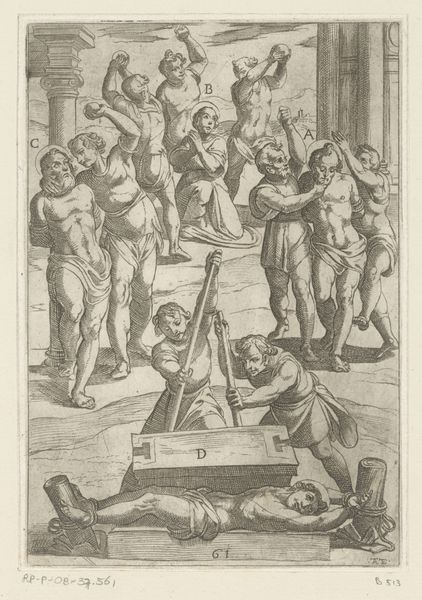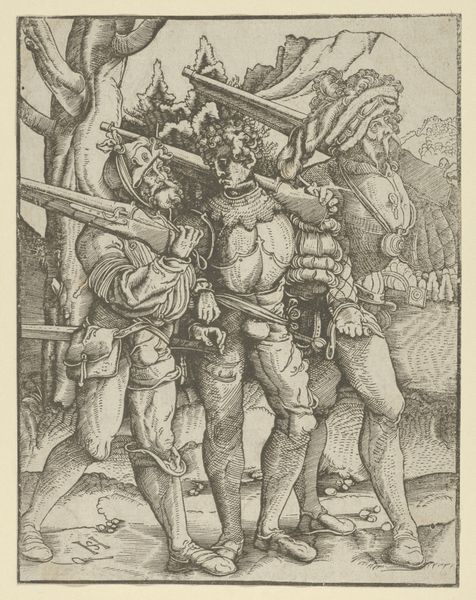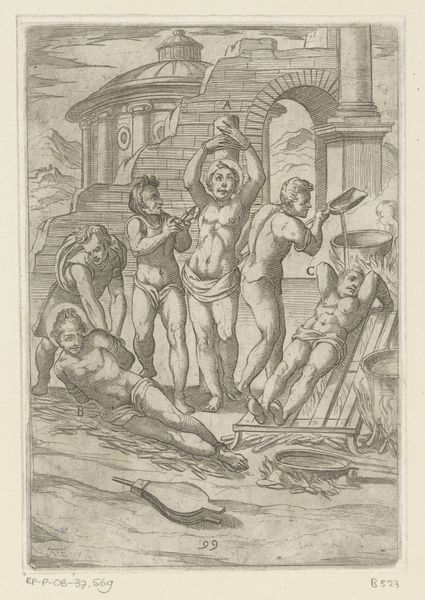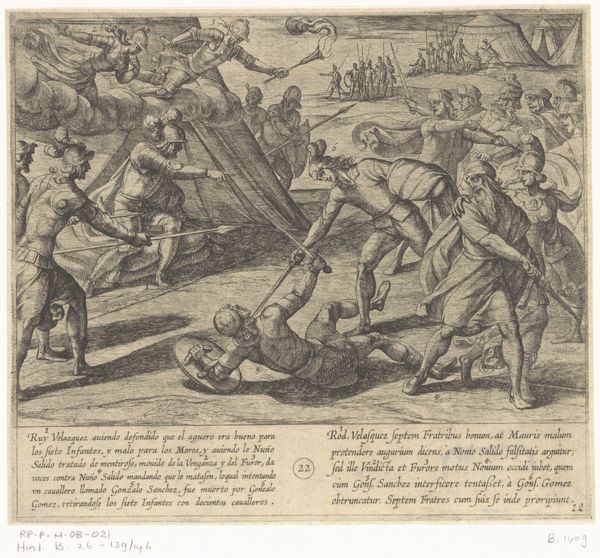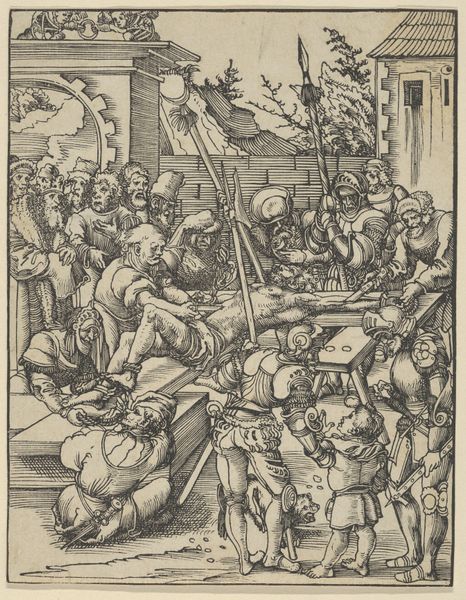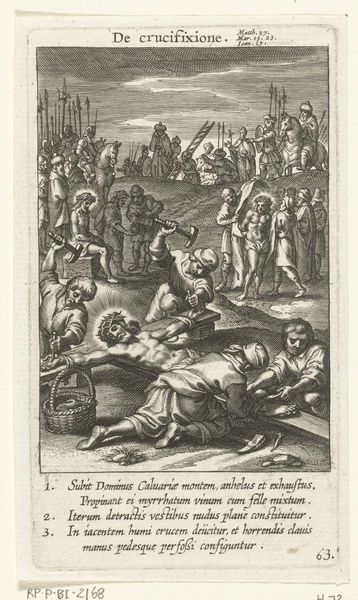
print, engraving
# print
#
old engraving style
#
figuration
#
pen-ink sketch
#
pen work
#
history-painting
#
engraving
Dimensions: height 194 mm, width 133 mm
Copyright: Rijks Museum: Open Domain
Editor: Here we have Antonio Tempesta's striking engraving, "Foltering: voortslepen door paarden," created sometime between 1565 and 1630. The scene is undeniably brutal. The figures and frantic energy are a bit overwhelming... what initially strikes you about this piece? Curator: Oh, darling, isn’t it deliciously dramatic? Look at the dance of line, that insistent choreography of violence rendered in exquisite detail. It’s a peepshow into the dark heart of power. Consider the period: religious wars, the rise of absolutism – this image, born of ink, bleeds the anxieties of its age. Doesn’t it remind you of nightmares you had after reading too many comic books when you were little? What narrative do you think the artist is trying to convey with such stark imagery? Editor: It feels allegorical, maybe commentary on unchecked power, as you said. I'm particularly interested in how Tempesta balances the graphic violence with almost an academic study of the human form. Is it celebrating a particular historical event? Curator: Precisely! There’s a certain… detached fascination, wouldn't you agree? As for history, Tempesta’s often less concerned with factual accuracy and more with crafting a potent moral lesson, a visual sermon, if you will. Like a particularly twisted fairytale, perhaps? Do you find yourself more disturbed by the action, or strangely compelled by the execution? Editor: Definitely compelled. It’s a repulsive image, yes, but beautifully rendered, making the message much more striking and memorable, I think. The violence on display has staying power precisely *because* it is visualized so gracefully. Curator: Ah, exactly! It’s a seduction, isn’t it? A brutal beauty that worms its way into your mind. We came, we saw, we were perhaps, ever so slightly, captivated. Food for thought, no?
Comments
No comments
Be the first to comment and join the conversation on the ultimate creative platform.
